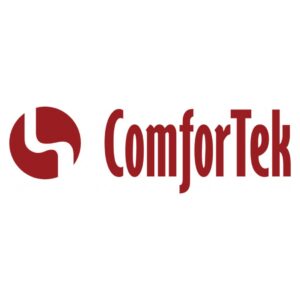Assessing my parents’ housing prospects
Over a month ago, I flew across the country to attend the 2009 Advanced Sales & Marketing Summit for Senior Housing, Assisted Living, and Nursing Industries in Naples, Florida. This was my first professional conference in the Senior Housing sector (and, I quickly realized, a must-attend event). I was there to listen to industry experts address new ways of maximizing sales efforts to increase occupancy.
While I sat in the day-and-a-half summit session, my parents were sitting in their beachfront condominium just two miles south of the conference hotel. My parents, who will turn 85 next month, are recent full-time Florida residents after spending the last 20 years splitting their time and lives between the Midwestern town of my youth and Naples.
They’ve both victoriously battled cancerous cells, but in hindsight those occurrences appear to be anomalies. Overall, their health has been remarkably good: healthy eaters, avid exercisers, mental fortitude.
Until recently.
They seldom leave their condominium—either too tired or too worried that they’ll run into someone whose name they’ve forgotten. Food is of little interest, and the time to prepare a meal is even less appealing. The time I spent with them last month opened my eyes to the stark realities of aging.
| Trenz and her parents. |
The real decision makers
My parents are “hot” prospects for a Senior Housing community. But at age 48, I may be even “hotter.”
Boomers influence 78% of purchasing decisions of their elderly parents; daughters (56%) are more likely than sons (44%) to be acting in the role of primary decision-maker regardless of who is officially designated as the responsible party. In most cases, it is the elderly couple who makes the decision—but that decision is usually based on information supplied by adult children and, in some instances, “gatekeepers” (i.e., estate lawyers, financial advisors, social workers).
Searching the Web for “Senior Housing” (other terms I’ve used include “Senior Living,” “Assisted Living,” “Independent Living,” and “Retirement communities”) in the Naples area has become my new pastime. My immediate need is information: levels and quality of care, ease of transportation, unit layouts, meal plans and sample menus, pricing, activities, and required entrance examinations. And if a community isn’t appearing in the top organic listings in Google’s search, I won’t find it.
I don’t want my parents living in a community that lands on the second page.
The maps section on the Search Engine Results Page (SERP) doesn’t mean much to me, but the reviews and ratings do. I want to hear what residents and/or the children of residents have to say about a community. If one star is beside a community name, I promptly hit the back button.
No doubt my eye is more critical when it comes to Web site design and navigation because of my profession, but that first impression is critical. What greets me on a home page or landing page forms my first impression of that community. If the page doesn’t exude warmth, I question the community’s ability to provide a compassionate and caring environment. If the page doesn’t exude authenticity, I question the community’s ability to deliver on the services it claims to provide to its residents.
Respect the Google-factor
Keep in mind that boomers aren’t the only ones searching. The Nielsen Company reports that the number one online destination for seniors, as with the general public, is Google search.
The high level of search activity within the Senior Housing industry creates a critical need for online reputation management for each community.
The Google Maps service features consumer reviews; this is a huge opportunity to promote a community and is currently underutilized by the majority of Senior Housing communities.
Google Alerts let Senior Housing executives know exactly what is being said about a particular community. My parents’ short list of prospective communities is on my Google Alerts; I want to know everything I can about each community so we’re all well informed before they make their final decision.
Since I live across the country, if I haven’t already toured the community, the Internet serves as my senses—it lets me see a community, lets me hear what’s being said about a community, lets me begin a conversation with community management, lets me continue a conversation with my parents, and ultimately, lets me feel a certain way about a community.
The Internet has inarguably become one of the major influences in the decision-making process for Senior Housing. And the sooner Senior Housing executives make the Web a top priority in their marketing programs, the better. Marriott figured that one out four years ago when it implemented Internet marketing to move their Senior Living Services Communities; Marriott monthly sales increased over 800%, from $650,000 to $6,000,000.
Go figure. Amy Foster Trenz is the VP of Marketing at G5 Search Marketing, a provider of Local Marketing Solutions for vertical-specific, mid-cap companies (Storage, Multifamily Housing, Student Housing, Senior Housing). The company is based in Bend, Oregon.
I Advance Senior Care is the industry-leading source for practical, in-depth, business-building, and resident care information for owners, executives, administrators, and directors of nursing at assisted living communities, skilled nursing facilities, post-acute facilities, and continuing care retirement communities. The I Advance Senior Care editorial team and industry experts provide market analysis, strategic direction, policy commentary, clinical best-practices, business management, and technology breakthroughs.
I Advance Senior Care is part of the Institute for the Advancement of Senior Care and published by Plain-English Health Care.
Related Articles
Topics: Articles , Housing











